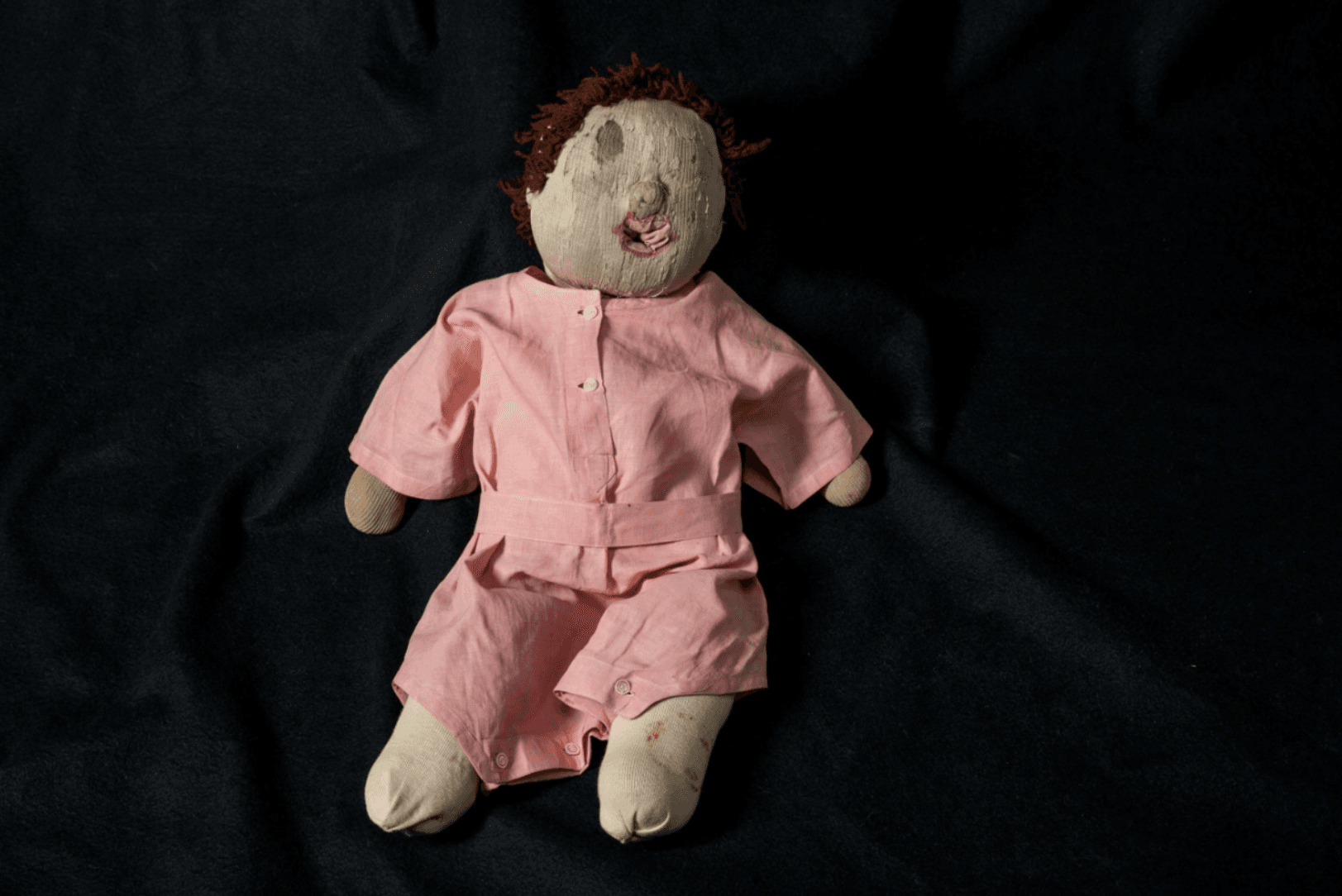
Michelle the Choking Doll
Accession Number: 2014.9.1
Year: Unknown
Material: Cloth, yarn, buttons
Pioneering otolaryngologist Chevalier Jackson, MD (1865–1958), used this doll, named “Michelle,” to demonstrate his non-surgical techniques for removing foreign objects from the throats of children. Jackson’s longtime French assistant Angele Piquenais sewed Michelle, who simulates a small patient with a child-sized trachea and esophagus. Jackson also once demonstrated an emergency tracheotomy on Michelle, an event documented on home movie film; her throat still shows the scar.
Jackson was world-renowned for his skill in the rapid use of endoscopic instruments to remove inhaled and swallowed foreign bodies without anesthesia, which greatly reduced the risks of the procedure. He combined his technical skill with a bedside manner that could keep distressed young patients calm. Jackson developed many specialized instruments and techniques for removing swallowed or inhaled objects, and could extract safety pins, nails, broken glass, and other dangerous objects without injuring the patient. His advanced techniques also enabled him to perform surgery to repair damage, such as removing scar tissue from accidental swallowing of caustic materials.
Jackson wrote that his father’s advice to “educate the eye and the fingers” spurred him to “continuous effort” in refining and improving the techniques of laryngoscopy. As a professor at medical schools including the University of Pittsburgh, Jefferson Medical College, and Temple University, Jackson also sought to educate the eyes and fingers of many medical students. By one estimate, the students he trained saved as many as half a million lives using his techniques.